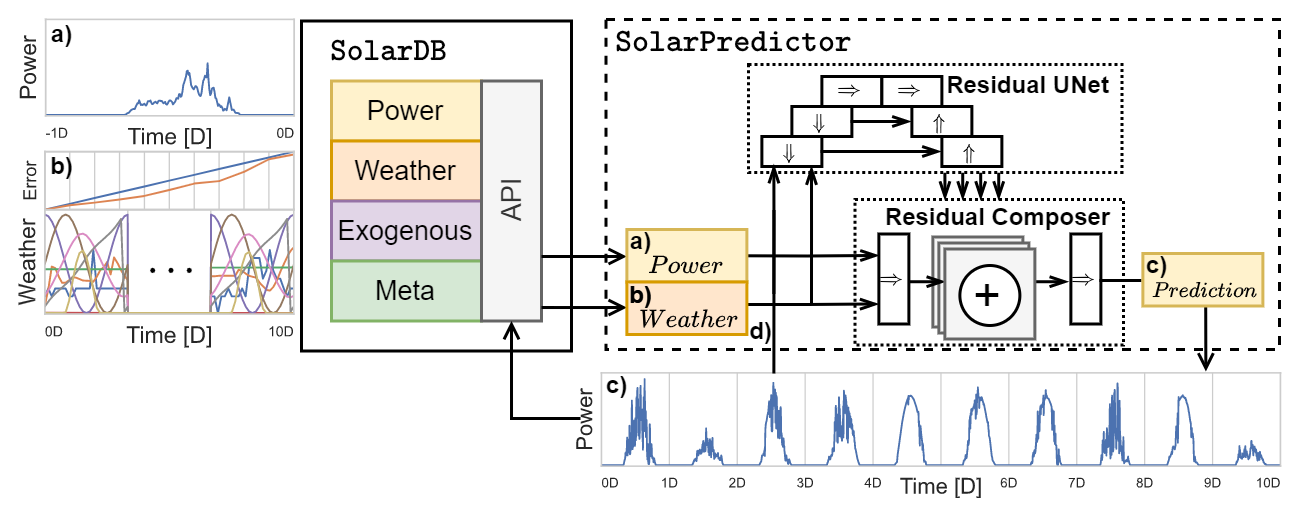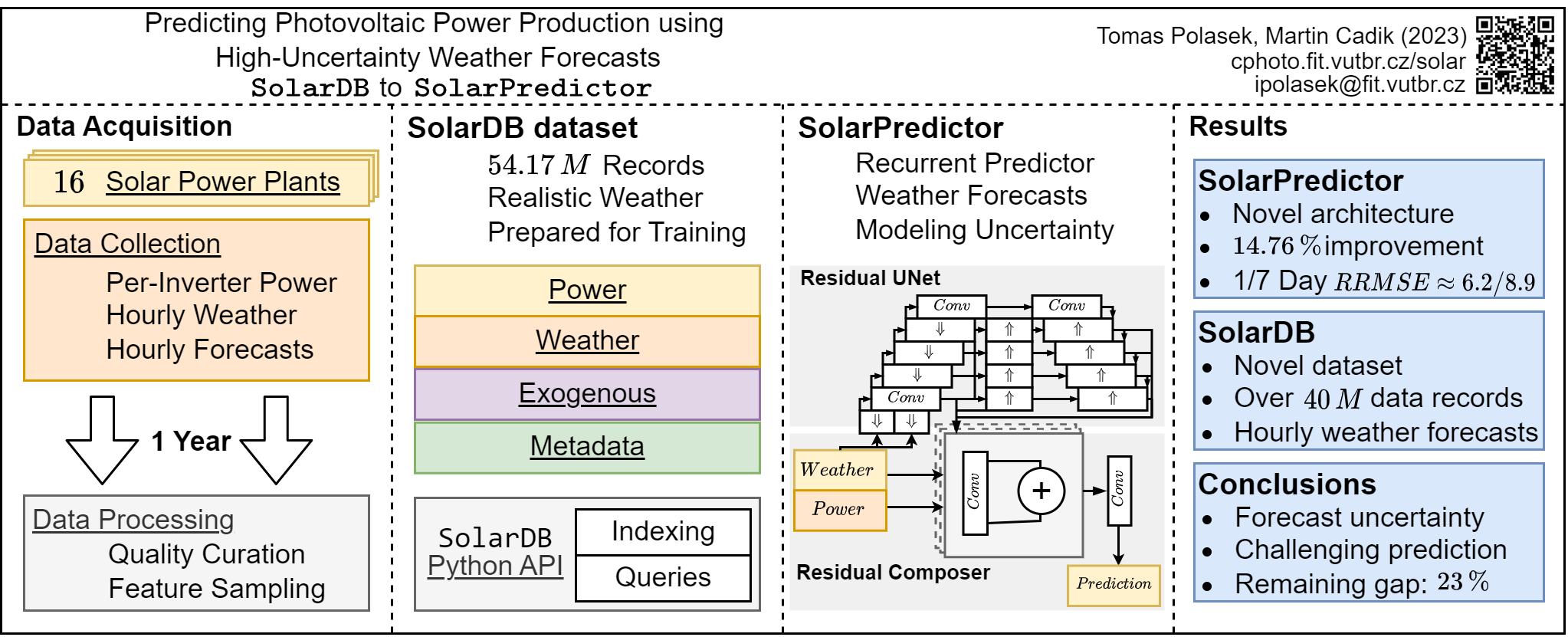Predicting Photovoltaic Power Production using
High-Uncertainty Weather Forecasts
ABSTRACT
A growing interest in renewable power increases its impact on the energy grid, posing significant challenges to reliability, stability, and planning. Although the use of weather-based prediction methods helps relieve these issues, their real-world accuracy is limited by the errors inherent to the weather forecast data used during the inference. To help resolve this limitation, we introduce the SolarPredictor model. It uses a hybrid convolutional architecture combining residual connections with multi-scale spatiotemporal analysis, predicting solar power from publicly available high-uncertainty weather forecasts. Further, to train the model, we present the SolarDB dataset comprising one year of power production data for 16 solar power plants. Crucially, we include weather forecasts with seven days of hourly history, allowing our model to anticipate errors in the meteorological features. In contrast to previous work, we evaluate the prediction accuracy using widely available low-precision weather forecasts, accurately reflecting the real-world performance. Comparing against 17 other techniques, we show the superior performance of our approach, reaching an average RRMSE of 6.15 for 1-day, 8.54 for 3-day, and 8.89 for 7-day predictions on the SolarDB dataset. Finally, we analyze the effects of weather forecast uncertainty on the prediction accuracy, showing a 23% performance gap compared to using zero-error weather.
OVERVIEW

ADDITIONAL MATERIALS
CITATION
@article{polasek23solar,
title = {Predicting Photovoltaic Power Production using High-Uncertainty Weather Forecasts},
journal = {Applied Energy},
volume = {339},
pages = {120989},
year = {2023},
issn = {0306-2619},
doi = {https://doi.org/10.1016/j.apenergy.2023.120989},
url = {https://www.sciencedirect.com/science/article/pii/S0306261923003537},
author= {Tomas Polasek and Martin \v{C}ad\'{i}k},
keywords = {Solar Power Forecasting, Photovoltaic Dataset, Prediction Uncertainty, Machine Learning Model},
abstract = {A growing interest in renewable power increases its impact on the energy grid, posing significant challenges to reliability, stability, and planning. Weather-based prediction methods help relieve these issues. However, their real-world accuracy is limited by weather forecast errors. To help resolve this limitation, we introduce the SolarPredictor model. Publicly available weather forecasts are used to predict solar power production by a target photovoltaic power plant. To achieve high prediction accuracy, the model is trained on genuine weather forecasts, including errors and mispredictions. Further, we introduce the SolarDB dataset, comprising one year of power production data for 16 power plants. The dataset includes hourly weather forecasts with seven days of history, allowing our model to anticipate errors in the meteorological features. The prediction accuracy is evaluated on a wide range of weather forecast ages, accurately reflecting real-world performance. The SolarPredictor model is compared against 17 techniques, reaching an average RRMSE of 6.15 for 1-day, 8.54 for 3-day, and 8.89 for 7-day predictions on the SolarDB dataset. Finally, we analyze the effects of weather forecast uncertainty on prediction accuracy, showing there is at least a 23\% performance gap compared to using zero-error weather. Data and additional resources are available at cphoto.fit.vutbr.cz/solar.}
}
PREDICTION SYSTEM

Overview of the prediction system: The SolarPredictor system is trained on the SolarDB dataset. The inputs consist of historical power (a) and weather features (b). Power predictions are estimated in daily blocks (c). The initial Power data (a) is historical, while consequent predictions recurrently use the previous outputs (d). Notably, the predictions use weather forecasts with increasing age (b, blue), which leads to progressively increasing weather error (b, orange).
Acknowledgements and Credits: the presented code and dataset should not be used for commercial purposes without our explicit permission. Please acknowledge the use of the dataset by citing the publication.

